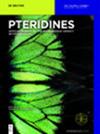同型半胱氨酸是预测下肢骨折手术患者下肢深静脉血栓形成风险的潜在血清学指标
IF 0.9
4区 医学
Q4 BIOCHEMISTRY & MOLECULAR BIOLOGY
引用次数: 1
摘要
摘要目的探讨下肢骨折手术患者血清同型半胱氨酸(Hcy)、D-二聚体与下肢深静脉血栓形成(DVT)风险的相关性。方法将75例下肢骨折手术患者按DVT后诊断标准分为DVT组(n=26)和对照组(n=49)。检测血清Hcy和D-二聚体48 h。比较两组患者血清Hcy和D-二聚体水平。用Pearson相关检验法研究血清Hcy与D-二聚体的相关性。应用受试者操作特征(ROC)曲线评价血清Hcy和D-二聚体作为DVT血清学标志物的诊断性能。结果血清Hcy浓度为11.96±3.98 μmol/L和7.92±3.27 μmol/L,DVT组血清D-二聚体浓度显著高于对照组(8.99±4.50 vs 1.70±2.11)μg/mL,差异有统计学意义(t=9.56,P<0.01)DVT组为1.036。使用血清Hcy作为预测DVT的生物标志物,预测灵敏度和特异性分别为76.92%和71.44%,在9.54的分界点下AUC为0.7804 μmol/L。对于血清D-二聚体,预测灵敏度和特异性分别为96.15%和73.47%,ROC下面积(AUC)为0.9455,切点为1.66 μg/mL。结论DTV患者血清Hcy明显升高,可作为下肢骨折术后DVT预测的血清学标志物。然而,血清Hcy的DVT预测性能不如D-二聚体,尤其是在诊断灵敏度方面。本文章由计算机程序翻译,如有差异,请以英文原文为准。
Homocysteine is potential serological marker for predicting the risk of deep venous thrombosis of the lower extremities in patients received operation of lower limb fracture
Abstract Objective The aim of the study is to investigate the correlations among serum homocysteine (Hcy), D-dimer, and the risk of developing deep venous thrombosis (DVT) of the lower extremities in patients who underwent operation for lower limb fracture. Methods Seventy-five cases who underwent operation for lower limb fracture were included and further divided into DVT group (n = 26) and control group (n = 49) based on post-DVT diagnostic criteria. The serum Hcy and D-dimer were examined 48 h after operation. The serum Hcy and D-dimer levels were compared between the two groups. The correlation between serum Hcy and D-dimer was investigated by the Pearson correlation test. The receiver-operating characteristic (ROC) curve was applied to evaluate the diagnostic performance of serum Hcy and D-dimer as serological markers for DVT. Results The serum Hcy concentrations were 11.96 ± 3.98 μmol/L and 7.92 ± 3.27 μmol/L for DVT and control groups, respectively, with statistical difference (t = 4.72, P < 0.01). The serum D-dimer in the DVT group was significantly higher than that of the control group (8.99 ± 4.50 vs 1.70 ± 2.11) μg/mL with statistical difference (t = 9.56, P < 0.01). Line regression analysis indicated that serum Hcy was positively correlated with serum D-dimer concentration and can be demonstrated by the equation of Y = 0.6651*X + 1.036 for the DVT group. Using serum Hcy as the biomarker for predicting DVT, the prediction sensitivity and specificity were 76.92 and 71.44%, respectively, with the AUC of 0.7804 under the cut-point of 9.54 μmol/L. For serum D-dimer, the prediction sensitivity and specificity were 96.15 and 73.47%, respectively, with the area under the ROC (AUC) of 0.9455 under the cut-point of 1.66 μg/mL. Conclusion Serum Hcy was significantly elevated in DTV patients, and hence, it can be applied as a serological marker for DVT prediction in patients who underwent operation for lower limb fracture. However, the DVT prediction performance of serum Hcy was inferior to D-dimer especially for diagnostic sensitivity.
求助全文
通过发布文献求助,成功后即可免费获取论文全文。
去求助
来源期刊

Pteridines
生物-生化与分子生物学
CiteScore
1.20
自引率
25.00%
发文量
6
审稿时长
>12 weeks
期刊介绍:
Pteridines is an open acess international quarterly journal dealing with all aspects of pteridine research. Pteridines are heterocyclic fused ring compounds involved in a wide range of biological functions from the color on butterfly wings to cofactors in enzyme catalysis to essential vitamins. Of the pteridines, 5,6,7,8-tetrahydrobiopterin is the necessary cofactor of several aromatic amino acid monoxygenases, the nitric oxide synthases and glyceryl ether monoxygenase (GEMO). Neopterin plays an essential role in the immune system and is an important biomarker in laboratory medicine for diseases such as HIV, cardiovascular disease, malignant tumors, among others.
Topics:
-Neopterin, dihydroneopterin, monapterin-
Biopterin, tetrahydrobiopterin-
Folates, antifolates, riboflavin-
Phenylalanine, tyrosine, phenylketonuria, serotonin, adrenalin, noradrenalin, L-DOPA, dopamine, related biogenic amines-
Phenylalanine hydroxylase, tyrosine hydroxylase, tryptophan hydroxylase, nitric oxide synthases (iNOS), alkylglycerol monooxygenase (AGMO), dihydropterin reductase, sepiapterin reductase-
Homocysteine, mediators of inflammation, redox systems, iron.
 求助内容:
求助内容: 应助结果提醒方式:
应助结果提醒方式:


